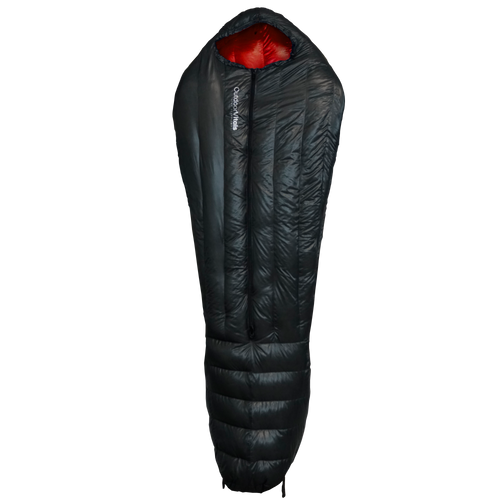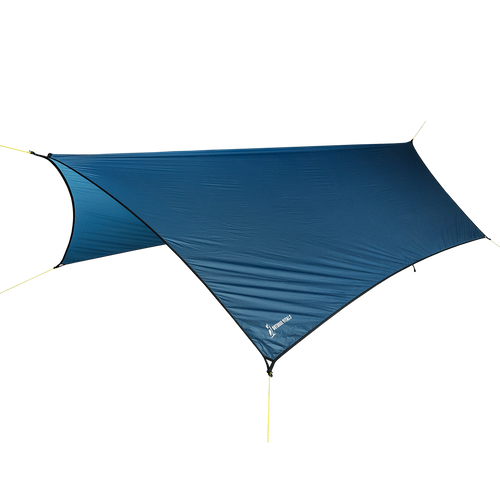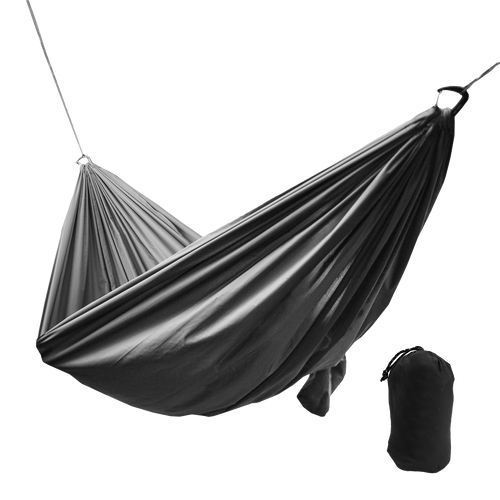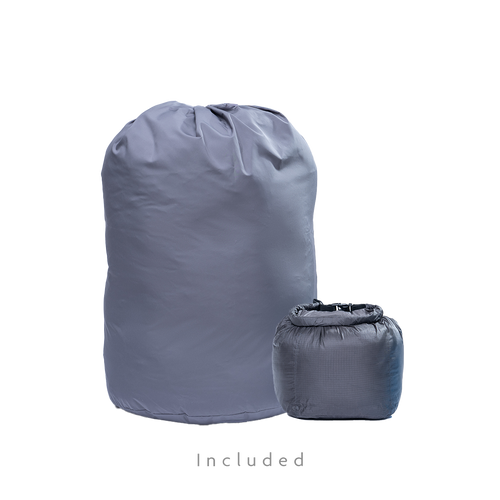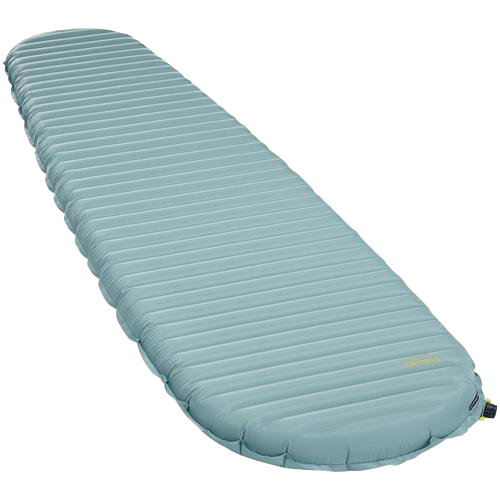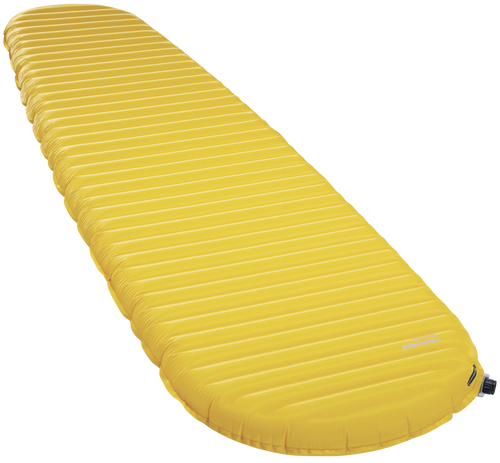How Outdoor Gear is REALLY Made
You'd be surprised by how little most people know about how outdoor gear is actually made.
So many people assume that lots of brands own their own factories for manufacturing gear, & that those factories ONLY manufacture gear for that brand. This is false.
Others think that major brands use sweat shops filled with child labor. Or they think that the country a piece of gear is made in indicates the quality. This is also false!
To be clear there are some small cottage brands that DO take care of their own internal manufacturing at a small scale. But there are quite a few limits on what they can do because of the complexities of producing technical designs.
This article will help you understand why that is, and how bigger brands are ACTUALLY developing and manufacturing outdoor gear.
So Why Does It Matter?
Understanding where your gear is made & how to spot quality is a valuable tool for when you're in the market for some new outdoor equipment.
We'll get to some tips on how to spot good quality in gear later, but first lets uncover the fascinating journey how outdoor gear comes to life.
For the vast majority of outdoor products, the gear is NOT made in brand-owned factories. To add another layer of complexity to things, most gear is also not built under one single roof!
The finished gear items that show up at your doorstep are the result of a complex collaboration between numerous businesses, fabric suppliers, partnerships, etc.
The Very Beginning - Yarn Factories
Every product is crafted from some sort of fabric, which began as yarn. Yarn is created in a factory built for that purpose, & depending on the circumstances can be shipped to a fabric mill.
Fabric Mills
Then, that fabric mill takes the yarn & weaves it into fabric, dyes it, applies coatings or treatments required, & then rolls it up for transport to yet ANOTHER factory.
Cut-And-Sew Factories
The next factory is typically a 'cut-and-sew' factory where fabric is combined with other necessary components for the finished product. These cut-and-sew factories have reputations & differing levels of quality in production. Top brands will make sure to use only the best cut-and-sew factories for production.
Cut-and-sew factories produce products for MANY different brands. Brands have to schedule time on their sewing lines to get their gear manufactured, & will need to work with suppliers or fabric mills to make sure that all the necessary components are at the cut-and-sew factories at the right time to be assembled into the end product.
The brand decides which fabrics & components to use & where. The brand also creates the design for the product with fabric patterns, placements, & colors. The cut-and-sew factory is simply assembling the brand's design & are not co-designers of the product.
All the Components
Now, it's not just yarn, fabrics, & cut-and-sew factories involved in the creation of outdoor gear. I mentioned that other components are also involved with the fabric at the cut-and-sew factories. Brands ALSO have to source things like webbing, zippers, buckles, alternate fabrics, trims, frames, foams, & more.
Each of those components come from factories of their own!
Once all of those components are assembled & the sewing line is booked, production can begin.
This can often mean that for something like a backpack, over 100 parts & pattern pieces need to be prepared for the final product BEFORE you can even start production.
You can see why cottage brands, who have to do ALL of this in their own factories, often keep their products as simple as possible.
This process requires teams & teams of people to properly execute!
How Do Brands Know Where To Source Each Part of an Outdoor Product?
Just like there are different levels of quality & technology in finished goods that you shop from, there are varying levels of quality & technology that come from different yarn factories, fabric mills, & cut-and-sew factories. Outdoor gear brands can either let their 'cut-and-sew' factories source the fabrics & yarns before sewing together gear, OR the brand themselves can select the source of yarn used in their fabrics.
Many big gear shows for brands such as "Outdoor Retailer" are good places to meet representatives from yarn factories, fabric mills, other component factories & cut-and-sew factories. These representatives often showcase examples of the work they do so brands can see the level of quality they put into their fabrics, threads, or sewing work.
What a brand's fabric & components sources are - combined with what cut-and-sew factory they use - has a HUGE impact in the quality & performance of their gear.
How Do You Know the True Quality Of Outdoor Gear?
Let's get one thing out of the way:
The country of origin has NOTHING to do with the quality of a product. In the past we've produces some of our gear designs in China, & some people would dismiss those things as "cheap China stuff."
Frankly that comment is so far off the mark.
Quality isn't linked to the product's country of origin, it's determined by the components used & the quality of the specific factory where it's made. Not all factories have the same processes or standards!
ANOTHER common misconception to get out of the way is that price is NOT necessarily a reflection of quality. Price does typically have an impact on quality, but it is not the only factor. Just because something costs you more in the store doesn't mean it's higher quality.
Certain business models require higher prices for their gear than other businesses due to retail markups or extensive marketing expenses - neither of which are directly linked to how the product was created.
So how do we asses the quality of a product?
We'd like to recommend 3 methods for evaluating the quality of outdoor gear:
Method 1: Become More Of An Expert
You can start by inspecting sewing quality product to product. I'm not just referring to those loose threads that might not have been trimmed perfectly. I'm talking about assessing the finer details like the seam straightness & overall quality of the stitching.
Look for uniformity, precise stitching, & overall craftsmanship of the seams. Chances are you've never done this before, so start now so that you can gradually become more familiar with it.
Seams & stitching aren't the only thing to become an expert about.
It's also important to know your fabrics! Understanding what different fabrics are & the unique abilities of one fabric versus another can help you judge how it is used in a finished product - is it better to have some stretch? Does the treatment on one fabric allow it to still breath if the end product requires breathability? What about fabric weight and durability?
You've got to be able to decide which fabrics are the best quality for the specific use case scenario of the gear item in question.
Method 2: Rely On Trusted Reviews
Look at the most recent reviews for reliable & respected reviewers, including those online & in reputable publications. Dig deeper & read between the lines. Pay attention to the actual context of the reviews & judge for yourself if the review actually holds validity.
Don't solely rely on average star ratings - context is critical!
For example, you might find a cheap item on Amazon with a perfect 5 star rating. But perhaps it's only rated with 5 stars because it costs half of what a higher quality product costs - context matters, & stars don't always reflect quality.
Also, be aware that some companies don't publish negative reviews on their websites. Some negative reviews can sometimes be evidence of true review authenticity.
Method 3: Consider Brand Reputation
If you don't want to risk your hard-earned money on unproven products, pay close attention to brand reputation. It's a powerful indicator of the trustworthiness & reliability you can expect from the gear you're considering.
To learn about a brand's reputation, you'll need to do your own research about what the brand does for quality control, which sources the brand uses for product manufacturing, how the brand responds to issues, and more.
Conclusion
Understanding the complexities of the production of outdoor gear is vital to assessing product quality. Don't be misled by misconceptions about brands, prices, or countries of origin.
Trust reliable reviews, consider brand reputation, & start assessing the technical aspects of the products you're considering for purchase.
Understanding how gear is made and implementing these 3 methods for spotting quality will help you make better purchase decisions so you have more trust & confidence in your gear!
For more info, watch this video about how outdoor gear is made:
3 comments
“Master the art of stitching and fabric selection to ensure top-notch quality in every product!”
https://tarpaulinsdirect.co.uk/
“Outdoor gear manufacturing is more complex than most people realize—let’s break it down!”
https://tarpaulinsdirect.co.uk/
Outdoor Vitals rocks,thanks for all that schooling.
It is nice to know all that info since i am planning a thru hike at 67.
Alot of living behind me and still learning,i listen to good advice!

